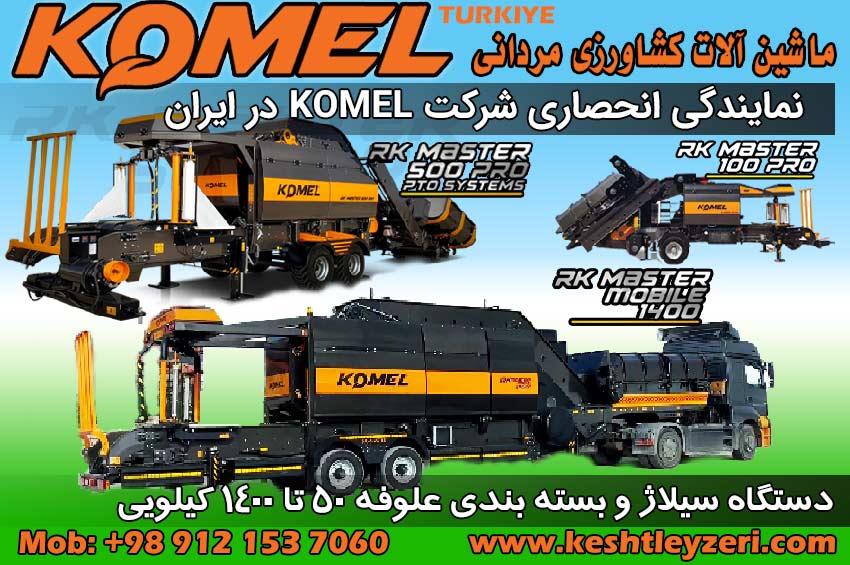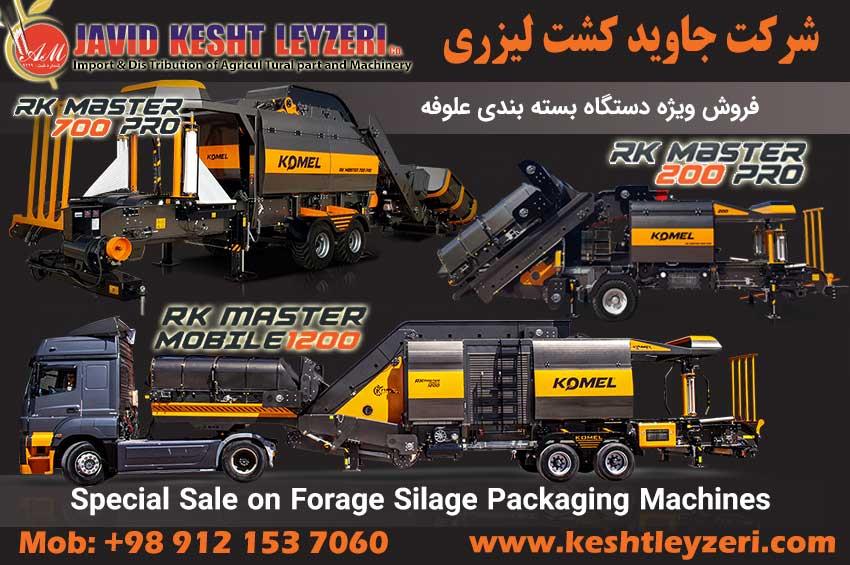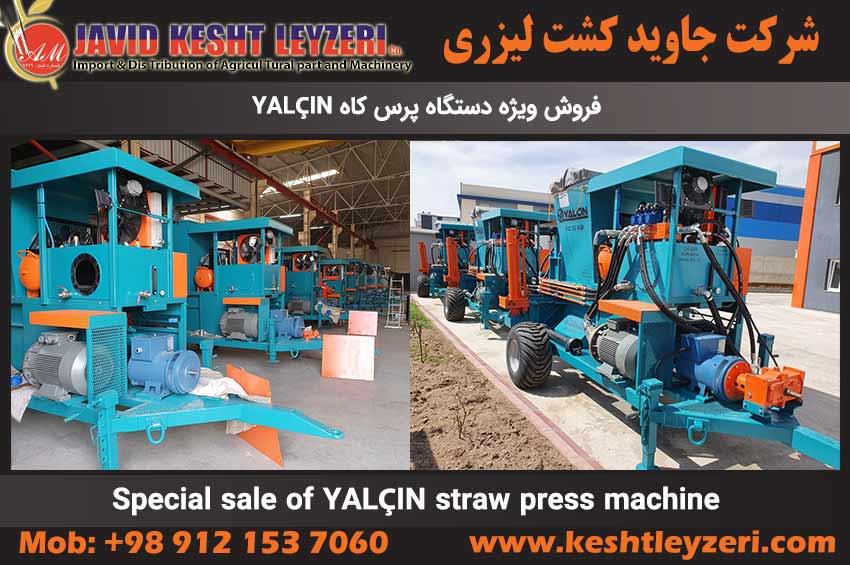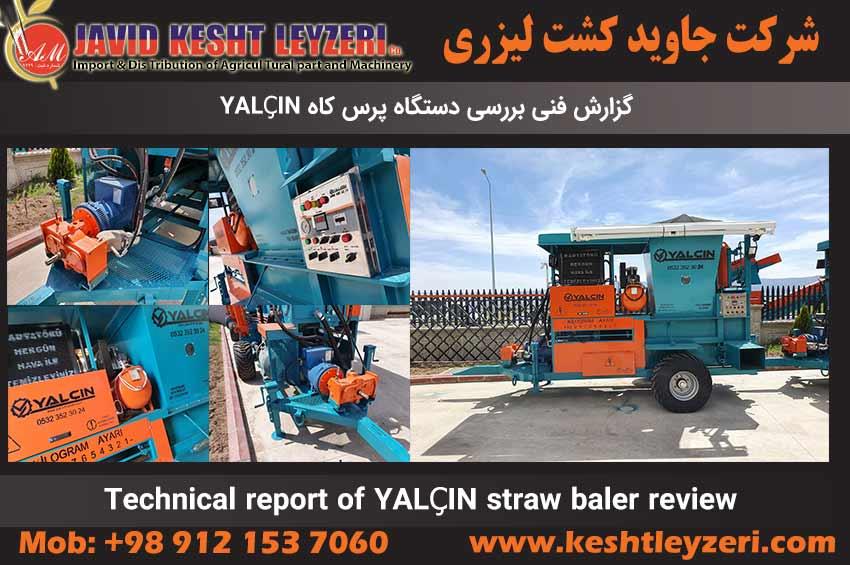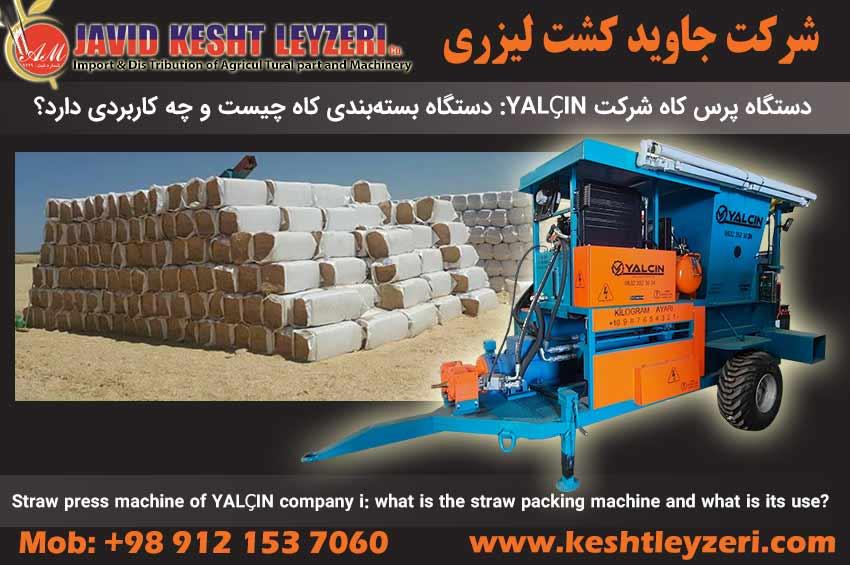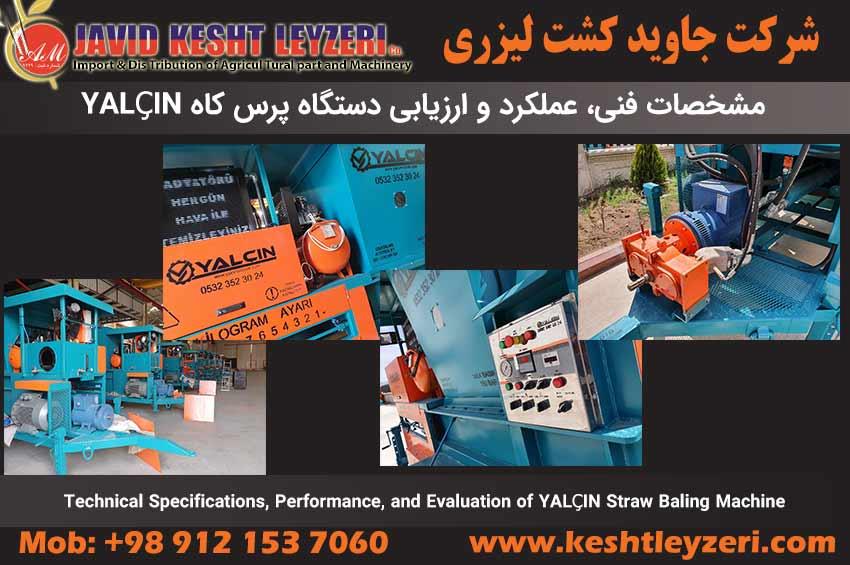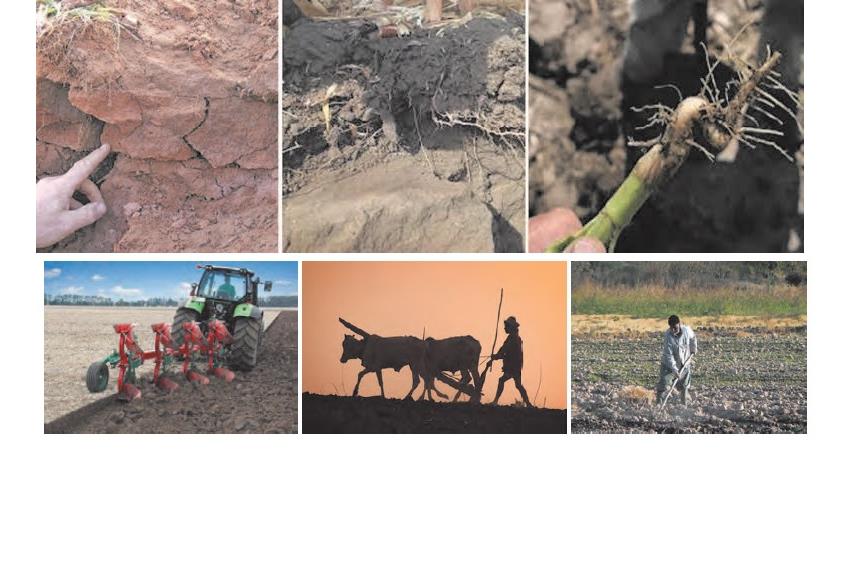
Primary tillage equipment and Secondary tillage
JAVID KESHT LEYZERI COMPANY
tillage, in agriculture, the preparation of soil for planting and the cultivation of soil after planting. Tillage is the manipulation of the soil into a desired condition by mechanical means; tools are employed to achieve some desired effect (such as pulverization, cutting, or movement). Soil is tilled to change its structure, to kill weeds, and to manage crop residues. Soil structure modification is often necessary to facilitate the intake, storage, and transmission of water and to provide a good environment for seeds and roots. Elimination of weeds is important, because they compete for water, nutrients, and light. Crop residues on the surface must be managed in order to provide conditions suitable for seeding and cultivating a crop.
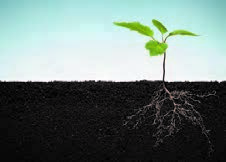
Generally speaking, if the size of the soil aggregates or particles is satisfactory, preparation of the seedbed will consist only of removing weeds and the management of residues. Unfortunately, the practices associated with planting, cultivating, and harvesting usually cause destruction of soil structure. This leaves preparation of the seedbed as the best opportunity to create desirable structure, in which large and stable pores extend from the soil surface to the water table or drains, ensuring rapid infiltration and drainage of excess or free water and promoting aeration of the subsoil. When these large pores are interspersed with small ones, the soil will retain and store moisture also.

Seedbed preparation procedures depend on soil texture and the desired change in size of aggregates. In soils of coarse texture, tillage will increase aggregate size, provided it is done when only the small pores are just filled with water; tillage at other than this ideal moisture will make for smaller aggregates. By contrast, fine-textured soils form clods; these require breakage into smaller units by weathering or by machines. If too wet or too dry, the power requirements for shattering dry clods or cutting wet ones are prohibitive when using tillage alone. Thus, the farmer usually attempts tillage of such soils only after a slow rain has moistened the clods and made them friable.
Some soils require deepening of the root zone to permit increased rate of water intake and improved storage. Unfavourable aeration in zones of poor drainage also limits root development and inhibits use of water in the subsoil.
Tillage, particularly conventional plowing, may create a hardpan, or plow sole—that is, a compacted layer just below the zone disturbed by tillage. Such layers are more prevalent with increasing levels of mechanization; they reduce crop yields and must be shattered, allowing water to be stored in and below the shattered zone for later crops. Tillage is also associated with the loss of fertile topsoil through erosion, a serious threat to the longevity of arable land.
Primary tillage equipment
Equipment used to break and loosen soil for a depth of 15 to 90 cm (6 to 36 inches) may be called primary tillage equipment. It includes moldboard, disk, rotary, chisel, and subsoil plows.
The moldboard plow is adapted to the breaking of many soil types. It is well suited for turning under and covering crop residues. There are hundreds of different designs, each intended to function best in performing certain tasks in specified soils. The part that breaks the soil is called the bottom or base; it is composed of the share, the landside, and the moldboard.

When a bottom turns the soil, it cuts a trench, or furrow, throwing to one side a ribbon of soil that is called the furrow slice. When plowing is started in the middle of a strip of land, a furrow is plowed across the field, and on the return trip a furrow slice is lapped over the first slice. This leaves a slightly higher ridge than the second, third, and other slices. The ridge is called a back furrow. When two strips of land are finished, the last furrows cut leave a trench about twice the width of one bottom, called a dead furrow. When land is broken by continuous lapping of furrows, it is called flat broken. If land is broken in alternate back furrows and dead furrows, it is said to be bedded or listed.
Different soils require different-shaped moldboards in order to give the same degree of pulverization of the soil. Thus, moldboards are divided into several different classes, including stubble, general-purpose, general-purpose for clay and stiff-sod soil, slat, blackland, and chilled general-purpose. The blackland bottom is used, for example, in areas in which the soil does not scour easily—that is, where the soil does not leave the surface of the emerging plow clean and polished.
The share is the cutting edge of the moldboard plow. Its configuration is related to soil type, particularly in the down suction, or concavity, of its lower surface. Generally, three degrees of down suction are recognized: regular for light soil, deep for ordinary dry soil, and double-deep for clay and gravelly soils. In addition, the share has horizontal suction, which is the amount its point is bent out of line with the landside. Down suction causes the plow to penetrate to proper depth when pulled forward, while horizontal suction causes the plow to create the desired width of furrow.
Moldboard plow bottom sizes refer to width between the share wing and the landside. Tractor plow sizes generally range from 10 to 18 inches (25 to 45 cm), although larger, special-purpose types exist.
On modern mechanized farms, plow bottoms are connected to tractors either as trailing implements or integrally. One or more bottoms may be so attached. They are found paired right and left occasionally (two-way), with the advantage of throwing the furrow slice in a constant direction as the turns are made. A variation is the middlebreaker, or lister, which is a bottom equipped with both right- and left-handed moldboards.
The disk plow employs round concave disks of hardened steel, sharpened and sometimes serrated on the edge, with diameters ranging from 50 to 95 cm (20 to 38 inches). It reduces friction by making a rolling bottom in place of a sliding one. Its draft is about the same as that of the moldboard plow. The disk plow works to advantage in situations where the moldboard will not, as in sticky nonscouring soils, in fields with a plow sole, in dry hard ground, in peat soils, and for deep plowing. The disk plow bottom is usually equipped with a scraper that aids in pulverizing the furrow slice. Disk plows are either trailed or mounted integrally on a tractor.
The rotary plow’s essential feature is a set of knives or tines rotated on a shaft by a power source. The knives chop up the soil and throw it against a hood that covers the knife set. These machines can create good seedbeds, but their high cost and extra power requirement have limited general adoption, except for the small garden tractor.
The chisel plow is equipped with narrow double-ended shovels, or chisel points, mounted on long shanks. These points rip through the soil and stir it but do not invert and pulverize as well as the moldboard and disk plows. The chisel plow is often used to loosen hard dry soils prior to using regular plows; it is also useful for shattering a plow sole.
Subsoil plows are similar in principle but are much larger, since they are used to penetrate soil to depths of 50 to 90 cm (20 to 36 inches). Tractors of 60 to 85 horsepower are required to pull a single subsoil point through a hard soil at a depth of 90 cm (36 inches). These plows are sometimes equipped with a torpedo-shaped attachment for making subsurface drainage channels.
Secondary tillage
Secondary tillage, to improve the seedbed by increased soil pulverization, to conserve moisture through destruction of weeds, and to cut up crop residues, is accomplished by use of various types of cultivators, harrows, rollers, or pulverizers, and tools for mulching and fallowing. Used for stirring the soil at comparatively shallow depths, secondary tillage equipment is generally employed after the deeper primary tillage operations; some primary tillage tools, however, are usable for secondary tillage. There are five principal types of harrows: the disk, the spike-tooth, the spring-tooth, the rotary cross-harrow, and the soil surgeon. Rollers, or pulverizers, with V-shaped wheels make a firm and continuous seedbed while crushing clods. These tools often are combined with each other.
When moisture is scarce and control of wind and water erosion necessary, tillage is sometimes carried out in such a way that crop residues are left on the surface. This system is called trash farming, stubble mulch, or subsurface tillage. Principal equipment for subsurface tillage consists of sweeps and rod weeders. Sweeps are V-shaped knives drawn below the surface with cutting planes horizontal. A mounted set of sweeps provided with power lift and depth regulation is often called a field cultivator.
The typical rod weeder consists of a frame with several plowlike beams, each having a bearing at its point. Rods are extended through the bearings, which revolve slowly under power from a drive wheel. The revolving rod runs a few inches below the surface and pulls up vegetative growth; clearance of the growth from the rod is assisted by its rotation. Rod weeders are sometimes attached to chisel plows.
Some control of weeds is obtained by tillage that leaves the middles between crop rows loose and cloddy. On mechanized farms this is often accomplished with a cultivator pulled by a tractor. When a good seedbed is prepared only in the row, the seeded crop can become established ahead of the weeds. Plowing with the moldboard plow buries the weed seeds, retards their sprouting, and tends to reduce the operations needed to control them. If weed infestations become bad, they can be reduced somewhat by undercutting.
Since rainfall amount and distribution seldom match crop needs, farmers usually prefer tillage methods that encourage soil moisture storage at times when crops are not growing. From the soil moisture standpoint, any tillage practice that does not control weeds and result in greater moisture intake and retention during the storage period is probably unnecessary or undesirable.
Minimum tillage
The use of cropping systems with minimal tillage is usually desirable, because intensive tillage tends to break down soil structure. Techniques such as mulching also help prevent raindrops from injuring the surface structure. Excessive tillage leaves the soil susceptible to crusting, impedes water intake, increases runoff, and thus reduces water storage for crop use. Intensive vegetable production in warm climates where three crops per year may be grown on the same land may reduce the soil to a single-grain structure that facilitates surface cementation and poor aeration.
The loosening and granulating actions of plowing may improve soil structure if the plowing is done when the moisture content is optimal; if not so timed, however, plowing can create unfavourable structure. The lifting and inversion of the furrow slice likewise may not always be desirable, because in many cases it is better to leave a trashy surface.
The concept of minimum tillage and no-till agriculture has received much attention. One type of minimum tillage consists in seeding small grain in sod that has been relatively undisturbed. Narrow slits are cut in the sod, and seed and fertilizer are placed in the breaks thus formed. Soil normally subject to erosion can be planted to grain this way while still retaining the erosion resistance of the sod. The technique has been successful in preparing winter grazing in southeastern portions of the United States. In another type of minimum tillage, the land is broken and planted without further tillage in seedbed preparation. One approach involves breaking the land and planting seeds in the tractor tracks (wheel-track planting); the tractor weight crushes clods and leaves the seed surrounded by firm soil. Another method consists of mounting a planter behind the plow, thus planting without further traffic and leaving a loose seedbed that is satisfactory in areas where post-planting rains may be heavy. In some areas, where winter rain often comes after wheat is drilled, a rotation of wheat following peas has been successful. After the peas have been harvested, the field is rough plowed, and fall wheat is then drilled in directly. All these methods minimize expense and land preparation, tending to leave the soil rough, which reduces erosion and increases water intake. Somewhat similar systems are employed with row crops, where chemical weed control assists in reducing need for cultivation.
Mulch tillage
Mulch tillage is a system in which crop residues are left on the surface, and subsurface tillage leaves them relatively undisturbed. In dryland areas, a maximum amount of mulch is left on the surface; in more humid regions, however, some of the mulch is buried. Planting is accomplished with disk openers that go through several inches of mulch. Since mulch decomposition may deprive the crop of nitrogen, extra fertilizer is often placed below the mulch in humid areas. In rainy sections, intercropping extends the protection against erosion provided by mulches. Intercrops are typically small grains or sod crops such as alfalfa or clover grown between the rows of a field crop that reach maturity shortly after the field crop has been established and furnish mulch cover for a long time. See also green manure.
If growth of the intercrop competes with the main crop for moisture and nutrients, that growth may be killed at seeding time or soon thereafter by undercutting with sweeps.
Tillage in dry areas must make maximum use of scanty rainfall. The lister (double-moldboard) plow, or middlebreaker, is here used to make water-impounding ridges that promote infiltration.

